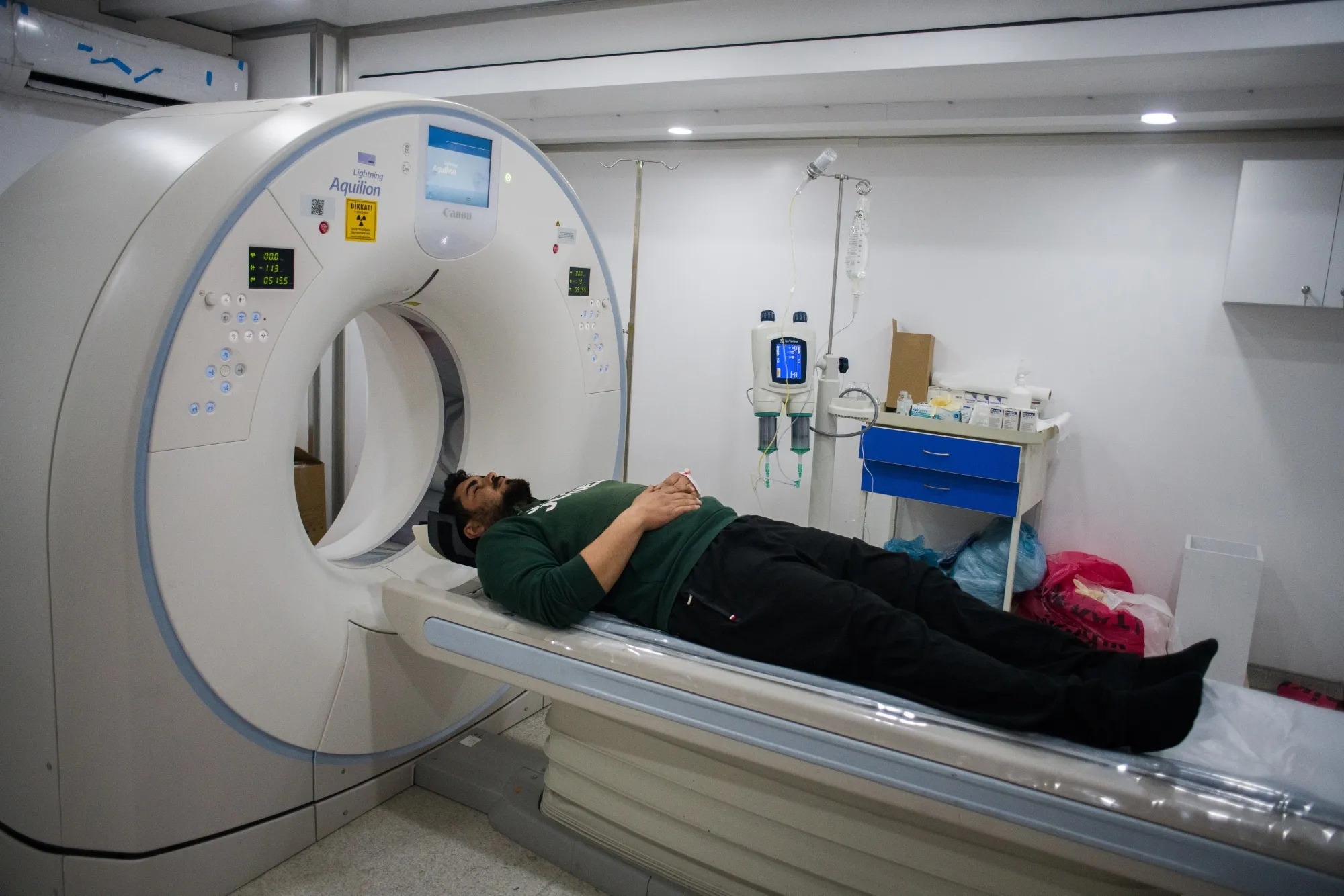2MDOpinion delivers world-class medical second opinion from top specialists, giving patients clarity and confidence in just days, not months
 Written By: Hesam Seyedi | September 9, 2025
Written By: Hesam Seyedi | September 9, 2025
You walk out of the imaging clinic with your MRI results, expecting clarity.
Instead, you get more questions than answers. Here’s the unsettling truth: up to 30% of MRI diagnoses are found to be inaccurate or significantly different when reviewed by a second specialist.
For patients, that margin of error is not just a number. It can mean the difference between surgery or no surgery, chemotherapy or observation, relief or continued pain. Too many people assume the first MRI report is absolute, when in reality, it might only be part of the story.
The good news is you do not have to stop at the first read. A second opinion on your MRI is often faster and easier than you think, and it can change your diagnosis or treatment path entirely.
MRIs are now one of the most requested imaging tools in Canada. Projections show around 3 million MRI exams are expected every year by 2025, driven by an aging population and increasingly complex health needs.
From cancer detection to evaluating sports injuries, MRIs guide some of the most important medical decisions. They offer a level of detail that CT scans or X-rays can’t match, especially when it comes to soft tissues, the brain, ligaments, and organs.
If you’re comparing imaging options or trying to understand how these tests differ, you may find it helpful to review this breakdown of ultrasound vs CT scan. Each tool plays a unique role in diagnosis, and knowing how they stack up can make your next steps clearer.
The challenge is volume. With millions of MRIs being performed each year, radiologists are under pressure to interpret them quickly. Across Canada and internationally, this demand increases the chance of missed findings or rushed interpretations. Even small errors can lead to delayed treatment or unnecessary interventions.
That’s why the accuracy of the reading is just as important as the scan itself.

Getting an MRI in Canada often means waiting. The median wait time has increased by about 15 days compared with pre-pandemic levels, leaving patients stuck in limbo.
For someone living with pain, unexplained symptoms, or a possible cancer diagnosis, those extra days feel unbearable. A delayed scan can push back treatment decisions, extend suffering, and add stress to an already anxious time.
At the same time, demand keeps climbing. More scans mean more pressure on radiologists to read quickly, which increases the chance of errors. The result is a system where patients wait longer for results that are not always as accurate as they should be.
Patients often assume one MRI report is enough, but doctors know that is not always the case. In fact, second opinion requests on MRIs in the USA rose from just 4.3% to 35.7% over a 13-year period. The sharp increase shows how both patients and physicians recognize the limits of a single interpretation.
The first reading may be correct, but when the stakes involve surgery, cancer treatment, or lifelong therapy, a confirmation can be critical. A second opinion can either validate the initial results or uncover errors that change the treatment path completely.
This shift toward second opinions is not a sign of mistrust. It is part of safer, more careful medicine.
Patients often assume one MRI report is enough, but doctors know that is not always the case. In fact, second opinion requests on MRIs in the USA rose from just 4.3% to 35.7% over a 13-year period. The sharp increase shows how both patients and physicians recognize the limits of a single interpretation.
Why does this matter so much? An MRI is often the gateway to major medical decisions. It can determine whether a patient is scheduled for back surgery, begins chemotherapy, or starts long-term medication. If that first report is incomplete or inaccurate, the consequences affect every step of care.
A second opinion acts as a safeguard. It can confirm the first reading, which gives patients peace of mind, or it can highlight discrepancies that completely alter the treatment plan. Even small differences in interpretation can mean the difference between invasive surgery and non-surgical management, or between aggressive cancer therapy and close observation.
Seeking another review is not a sign of mistrust in the healthcare system. It is a way of practising safer medicine. Just as patients get multiple quotes before a major purchase, confirming something as serious as an MRI result is a responsible step. More specialists are encouraging patients to do so because they know that catching even one error can change, and sometimes save, a life.
The difference a second opinion can make is striking. In one review of spine MRIs, 61% revealed conflicting interpretations compared with the original report, and 75% led to more conservative treatment plans.
For patients, that often means avoiding unnecessary surgery, extra medications, or invasive procedures that carry risks of their own. Instead, a corrected reading may point to physical therapy, lifestyle changes, or less aggressive monitoring.
A single second look at an MRI can save patients from months of pain, the risks of surgery, or the financial and emotional cost of the wrong treatment path.
Not all MRI reads are equal. A general radiologist may interpret a scan correctly most of the time, but certain findings are subtle and require highly focused expertise. A large review found up to 70% discrepancy rates in abdominal and pelvic MRIs when re-interpreted by subspecialized radiologists.
This is why subspecialty matters. A breast MRI should ideally be read by a radiologist trained in breast imaging. A brain MRI is best reviewed by a neuroradiologist. Subspecialists know the patterns, variations, and warning signs in their area that generalists may overlook.
For patients, choosing the right expert can mean catching a tumour earlier, avoiding a misdiagnosis, or receiving a more precise treatment plan. The scan itself is only as good as the eyes reviewing it.
Some MRI results are too important to leave to a single reading. In neuro-oncology, 7.8% of MRI studies had clinically significant discrepancies when reviewed a second time. These second reviews uncovered missed tumours, hidden metastases, and signs of disease progression that were not seen in the original reports.
So when should patients always consider a second opinion?
▪ Before surgery or any invasive treatment.
▪ When results do not match the symptoms a patient is experiencing.
▪ When the condition is rare, complex, or involves cancer.
▪ When a diagnosis feels uncertain or life-changing.
In these moments, an extra review is not just reassurance. It can completely alter the course of care and provide answers that change outcomes.
Many patients are surprised by how simple it is to have their MRI reviewed again.
In the USA, the MRI market was valued at $1.4 billion in 2025 and is projected to grow to $1.8 billion by 2030. This growth reflects not just more scans but also more patients seeking expert second readings.
Here is how the process usually works:
▪ Request your MRI images. Hospitals and imaging centres can provide a digital copy on a CD or through a secure portal.
▪ Choose a platform or specialist. Telemedicine and second opinion services allow you to upload scans securely.
▪ Match with a subspecialist. Pick a radiologist trained in the body area being scanned, such as neuroradiology for brain MRIs or abdominal radiology for liver MRIs.
▪ Review the findings. Once the second read is complete, discuss the report with your primary doctor to compare recommendations and next steps.
The process is more straightforward than most people think, and it can prevent unnecessary treatments or confirm the right path forward.
The demand for MRIs continues to rise. In Saskatchewan alone, over 63,000 MRI exams were performed in 2024–25, a 9% increase from previous years. Across Canada, similar trends point to heavier use of imaging for aging populations and complex conditions.
As the numbers climb, accuracy becomes even more important. A single misread can affect not just one patient but also the system that must handle delayed treatments, repeat scans, and unnecessary procedures. Second opinions offer a safeguard against these pressures.
The future of MRI care is not about doing fewer scans. It is about making sure each scan is read by the right expert and reviewed when needed, so patients receive the clearest possible answers.
An MRI can shape life-changing decisions, but even the best scans are not immune to error.
Studies show that up to 30% of readings may be inaccurate or incomplete when reviewed a second time. That means many Canadians could be sent down the wrong treatment path.
Are you a Canadian who needs your MRI reviewed by an expert? A second medical opinion can confirm your results, uncover missed findings, or give you confidence before starting treatment. It is fast, secure, and accessible from anywhere in the country.
Do not wait in uncertainty. Get your MRI reviewed today through 2MDOpinion and take the next step toward clear answers and the right care.
2MDOpinion delivers world-class medical second opinion from top specialists, giving patients clarity and confidence in just days, not months
Email Us
| Cookie | Duration | Description |
|---|---|---|
| cookielawinfo-checkbox-advertisement | 1 year | Set by the GDPR Cookie Consent plugin, this cookie is used to record the user consent for the cookies in the "Advertisement" category . |
| cookielawinfo-checkbox-analytics | 11 months | This cookie is set by GDPR Cookie Consent plugin. The cookie is used to store the user consent for the cookies in the category "Analytics". |
| cookielawinfo-checkbox-functional | 11 months | The cookie is set by GDPR cookie consent to record the user consent for the cookies in the category "Functional". |
| cookielawinfo-checkbox-necessary | 11 months | This cookie is set by GDPR Cookie Consent plugin. The cookies is used to store the user consent for the cookies in the category "Necessary". |
| cookielawinfo-checkbox-others | 11 months | This cookie is set by GDPR Cookie Consent plugin. The cookie is used to store the user consent for the cookies in the category "Other. |
| cookielawinfo-checkbox-performance | 11 months | This cookie is set by GDPR Cookie Consent plugin. The cookie is used to store the user consent for the cookies in the category "Performance". |
| viewed_cookie_policy | 11 months | The cookie is set by the GDPR Cookie Consent plugin and is used to store whether or not user has consented to the use of cookies. It does not store any personal data. |
| Cookie | Duration | Description |
|---|---|---|
| _ga | 2 years | The _ga cookie, installed by Google Analytics, calculates visitor, session and campaign data and also keeps track of site usage for the site's analytics report. The cookie stores information anonymously and assigns a randomly generated number to recognize unique visitors. |
| _ga_530K1V7VWR | 2 years | This cookie is installed by Google Analytics. |
| Cookie | Duration | Description |
|---|---|---|
| nitroCachedPage | session | No description |